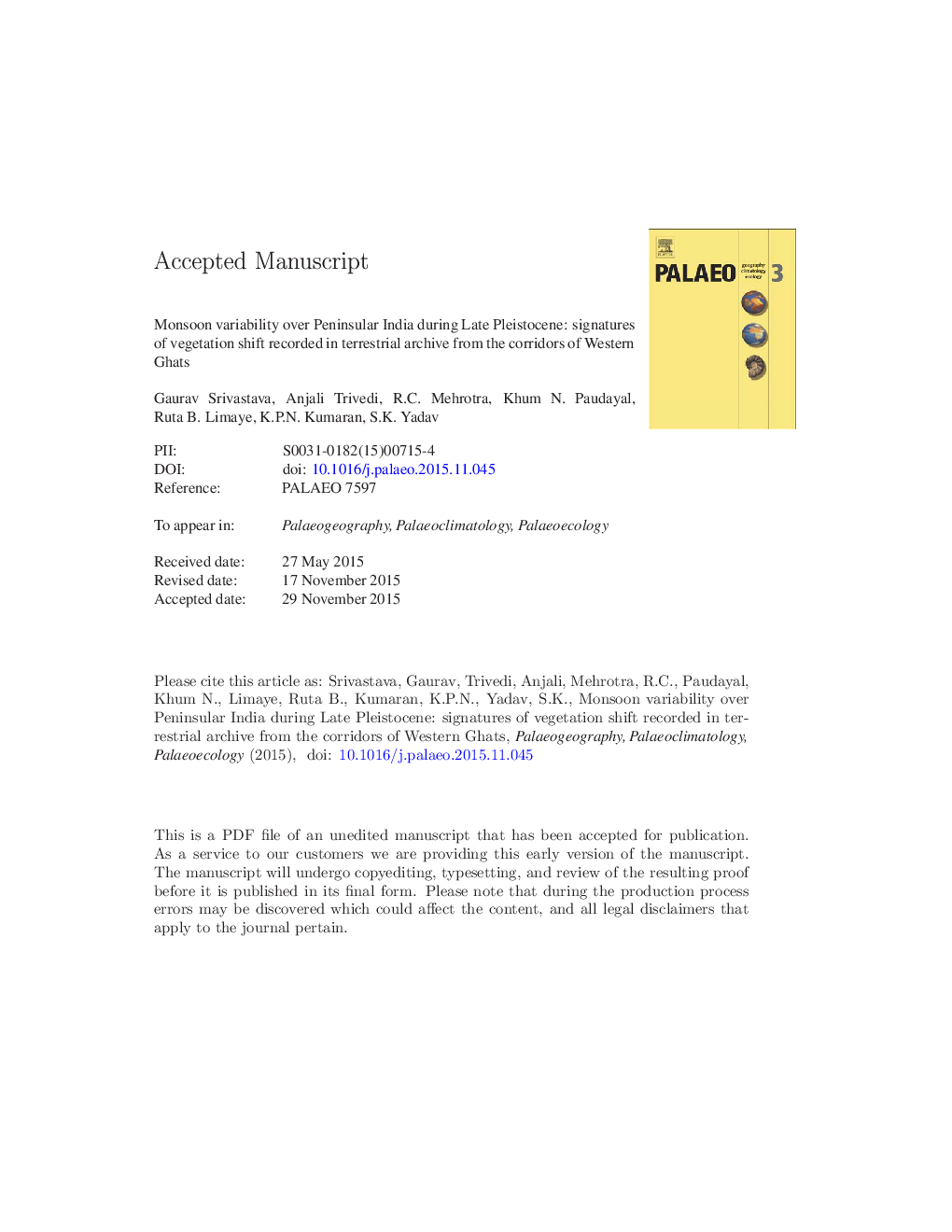| Article ID | Journal | Published Year | Pages | File Type |
|---|---|---|---|---|
| 6349220 | Palaeogeography, Palaeoclimatology, Palaeoecology | 2016 | 41 Pages |
Abstract
The fossil flora recovered from the Kangvai well, Ratnagiri District, Maharashtra (17°53â²41â³ N; 73°12â²23â³ E) has been used to reconstruct the monsoon variations and seasonal rainfall pattern during the Late Pleistocene (44,020 ± 390 years BP) by using the Coexistence Approach. The reconstruction suggests that the Southwest (SW) and Northeast monsoons (NE) contributed ~ 64% and 18% of the total rainfall, respectively. Moreover, the pre-monsoon showers were responsible for about 15% of the annual rainfall. As both SW and NE monsoons were very active, along with the pre-monsoonal rainfall, the length of rainy season increased and extended up to 9 months in a year favouring the evergreen continuum and prevalence of wet evergreen forests until the Late Glacial Maximum or slightly prior to it. However, due to the weakening of NE and pre-monsoon rainfall later in the Late Pleistocene and Early Holocene, the area experiences only four months of rainy season now on account of the present-day SW monsoon. These changes resulted in the extinction of wet evergreen taxa which are now endemic to the wetter parts of Western Ghats, from the fossil locality. Our reconstruction agrees with the previous studies from the Western Ghats suggesting that the wet evergreen taxa require < 4 months of dry season for their survival. This is the first quantitative rainfall reconstruction from India measuring the pre-monsoon, summer monsoon, post-monsoon and dry season from fluvio-lacustrine sediments.
Related Topics
Physical Sciences and Engineering
Earth and Planetary Sciences
Earth-Surface Processes
Authors
Gaurav Srivastava, Anjali Trivedi, R.C. Mehrotra, Khum N. Paudayal, Ruta B. Limaye, K.P.N. Kumaran, S.K. Yadav,
